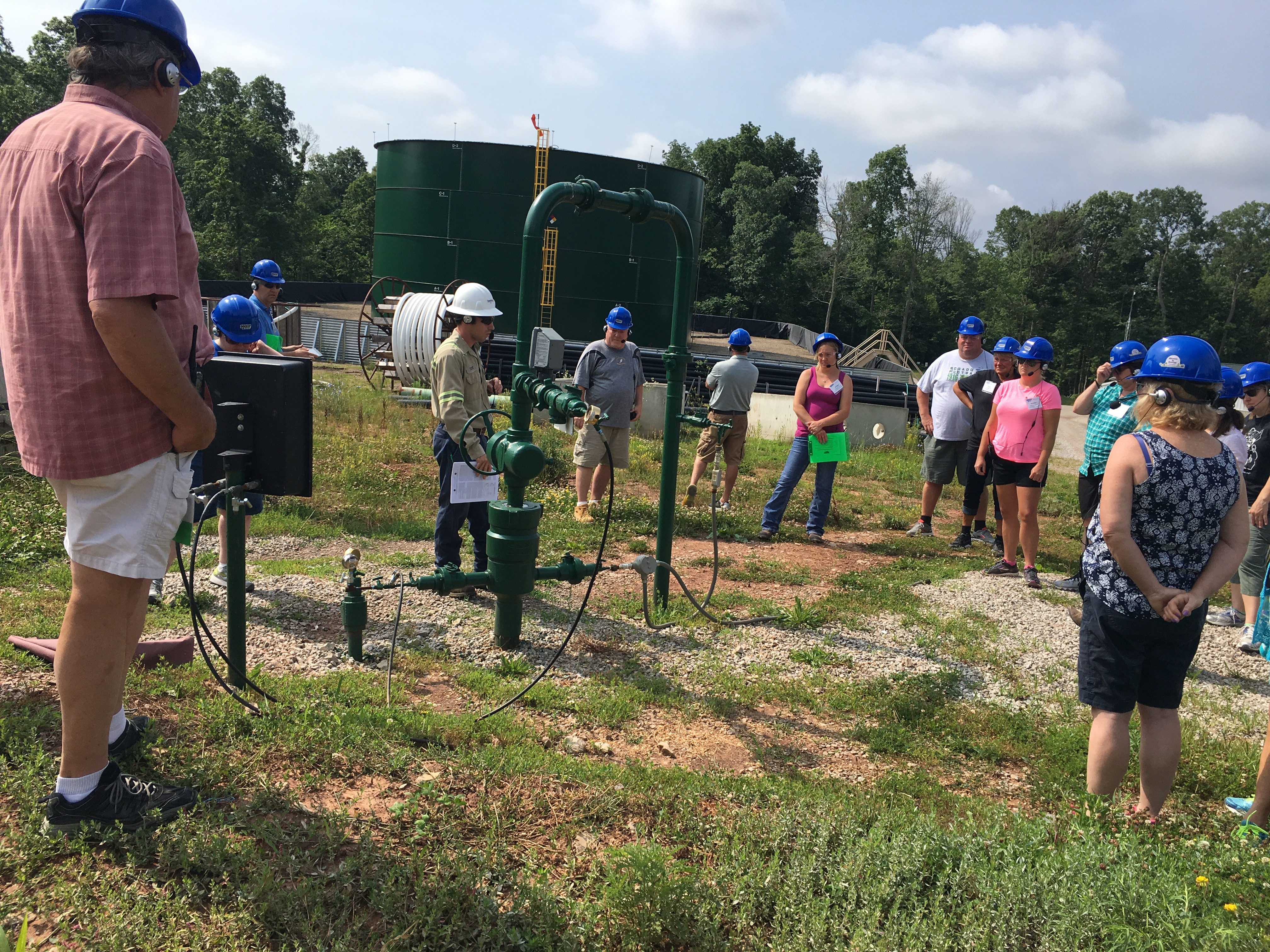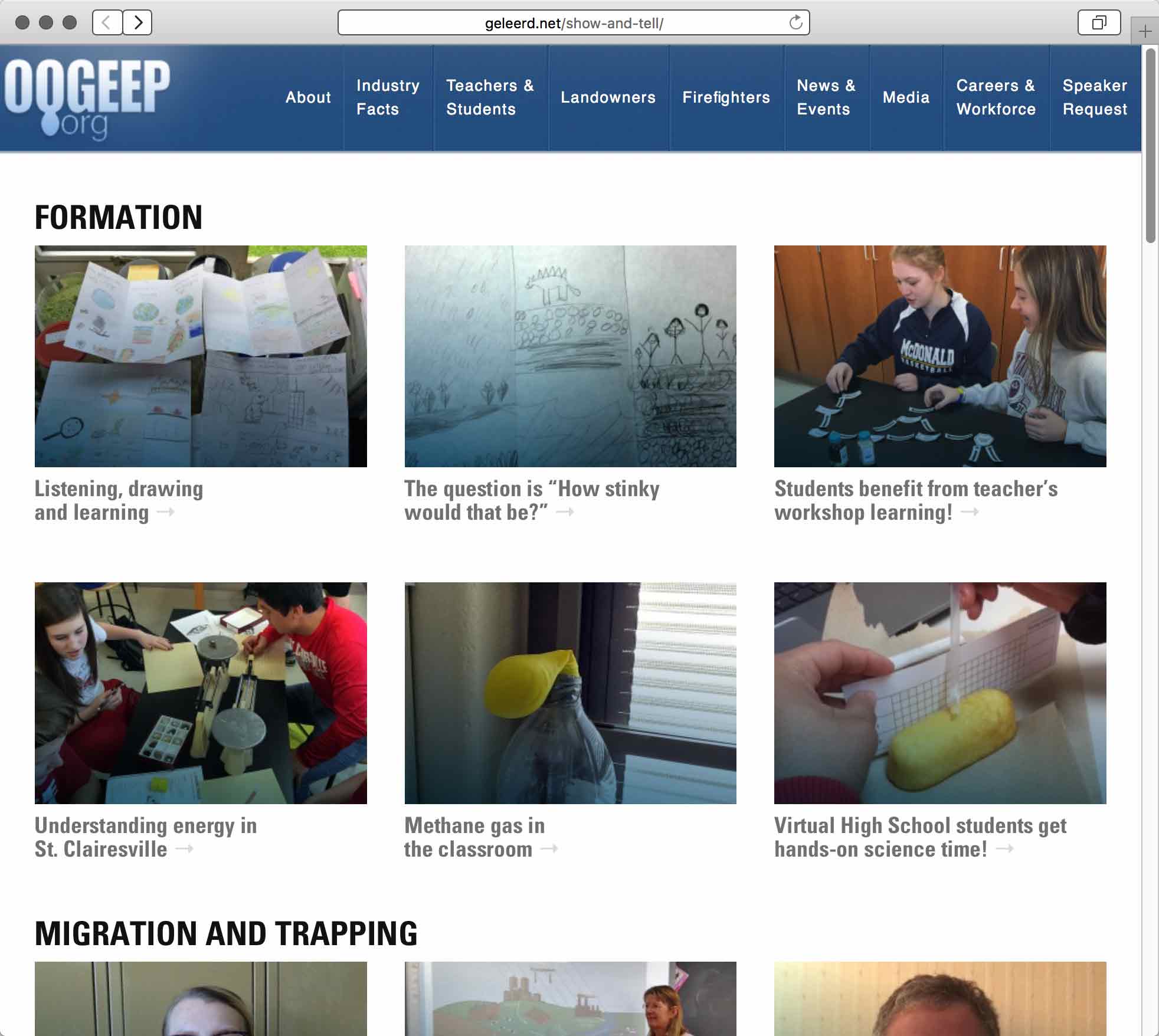EducationProjects.org + Ohio Oil & Gas Energy Education Program
Looking below the surface
OOGEEP is a check-off program funding 100% by Ohio's natural gas and crude oil producers and royalty owners through a voluntary assessment on oil and gas produced in Ohio. These dollars are used for education and public outreach only. Nearly 17 years ago they approached us to design an education program.
We started by addressing hot topics such as oil spills, but quickly realized that teachers and students alike didn’t know much about the process of getting oil and gas out of the ground. So we backed up and dealt with the basics:
- Why is there oil and gas here? That’s geology.
- How is it found? That’s physics and engineering.
- How do they get it out of the ground? The flow of fluids to the surface—that’s physics.
- How is it transported? That’s engineering and logistics.
- What will be done with it? That’s chemistry.
As the industry changes, so does our curriculum and workshop. In the past 5 years, we have added labs and experiments around hydraulic fracturing, seismic activity, water issues and petrochemicals.
We wanted to help teachers understand how the industry works and also to have balanced information about controversial issues, so they can speak knowledgeably.
Design
We convened a peer group of teachers and stakeholders to discuss the best approach and discovered a few items of importance:
- Peer to peer training through professional development
- Communications must include balanced information
- Create industry-ed connections with site tours & industry contacts
- Providing content the Executive Director could deliver
We pulled this information together, then used an innovative workshop design—peers teaching peers about how oil and gas production connects to science. The first program of this kind we tested the curriculum and lab work with the first workshop insuring success and making small changes along the way.



The instructional design was custom-built and included lessons, labs and hands-on experiments. Unlike other inquiries this client wanted to have active engagement in the teaching. The collaborative process included considerable input from the Executive Director to insure the design would support her goals.
Implementation
To adhere to one of our important directives regarding peer to peer training, we split the teachers into six groups. Each group learns something specific, then teaches their colleagues about what they’ve learned. This creates engaged learners—the teachers really seem to enjoy this method.
The learning and teaching are Day 1 of the workshop, and the participants get graduate credit for it. Day 2 is a field trip to related locations. We’ve visited fracking sites and reclaimed areas. The teachers can take pictures and walk all around, giving them access to the latest technology and how it’s being used.


Communications and engagement has been consistent over 17 years building a trusted network of educators and stakeholders. The workshops fill quickly every summer. The teachers go home with $150 worth of classroom supplies and curricula and spread the word amongst their peer group. We have teachers trained in all 88 of Ohio’s counties, and we see new teachers all the time. They take the supplies back to their schools and teach energy education in a variety of ways. We have trained K–12 teachers, so these science skills—physical science, environmental science, chemistry, geology, physics and more—are being presented at all different levels.
To support the online resources strategy we’ve added a page to the OOGEEP website called Show and Tell, where teachers’ use of the materials are written into articles accompanied by classroom photographs. These accounts help communicate the usefulness of the workshop, lessons, field trips, and supplies.
Engagement continues as we’ve partnered with other educators from our network, bringing in people who have a strong background knowledge of geology. We added a 2-day geology workshop in the summer of 2017 that filled up 48 hours after posting. This curriculum was developed with the help of Ohio's former state geologist, members of the Ohio Department of Natural Resources and the Ohio State University Geology Department. As part of our outreach strategy, we have presented 1-3 hour workshops at the Science Education Council of Ohio, the National Science Teachers Association Conference, various regional Soil and Water Conservation Districts and various local School District professional development events.
Outcomes
- Delivered workshop for 17 years
- Awarded the “2005 Friend of Science” presented by the Science Education Council of Ohio
- Won “Outstanding Project (Teacher Education)” presented by the Ohio EPA/Ohio Environmental Education Fund
- Teachers trained from all 88 counties in Ohio
- Executive Director teaches class and delivers tour!
- Delivered “Show and Tell” framework for teacher sharing
- Science skills being taught K-12 with this content